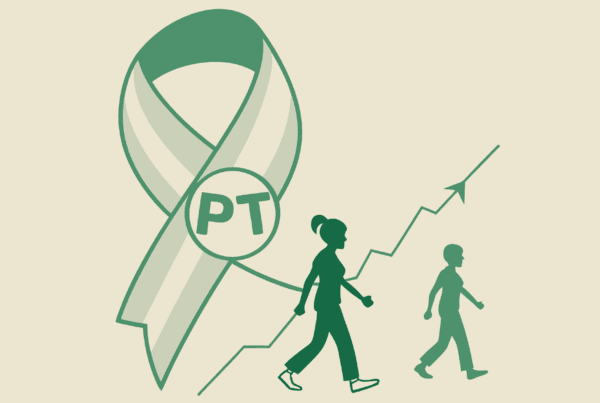Selling your Palliative Care practice is one of the most significant decisions of your career. In Cincinnati, the market presents a unique blend of opportunity and complexity. The demand for quality palliative services is high, and the M&A climate is active. This guide provides a clear overview of the current landscape, key steps in the process, and what you need to consider to protect your legacy and realize the full value of the practice you have built.
A Market Poised for Growth
The landscape for Palliative Care in Cincinnati is strong, supported by powerful national trends and local market dynamics. This is not a time for stagnation. It is a moment of opportunity for practice owners who understand the environment. The conditions are favorable for sellers who are well-prepared.
Here are the key factors driving the market:
1. Surging National Demand. The U.S. Palliative Care market is projected to reach nearly $8.8 billion by 2030. With a global shortage of services one in ten people who need this care receive it the fundamental demand for your practice’s services is undeniable.
2. A Robust Local Ecosystem. Cincinnati is home to established providers like TriHealth and Hospice of Cincinnati. This proves there is a mature, educated patient base and strong referral pathways. It signals a healthy, competitive environment where high-quality practices can thrive.
3. An Active M&A Climate. While direct sales of palliative practices are often private, recent acquisitions in the adjacent home care and hospice sector, like Addus HomeCare’s purchase of Queen City Hospice, show that strategic buyers are actively investing in the Cincinnati region.
Key Considerations for Your Practice
Understanding your practice from a buyer’s perspective is the first step. Sophisticated buyers look beyond raw revenue. They analyze the underlying health and stability of the business. You must be prepared to tell a compelling story backed by solid data.
Your practice’s financial health is the foundation. Buyers will scrutinize your revenue streams, payer mix, and profitability (Adjusted EBITDA), looking for consistent growth and predictable cash flow. How you’ve managed operational expenses and staffing costs will be critical.
Equally important is your operational strength. This includes the quality and retention of your clinical team, the efficiency of your workflows, and the technology you use, like your EMR system. A practice that can run smoothly without heavy reliance on the owner is always more valuable.
Finally, your market position in Cincinnati sets you apart. Strong referral relationships with local hospitals and physician groups are invaluable assets. You need to clearly articulate your competitive advantages and the specific patient population you serve within the greater Cincinnati area.
What Buyers Are Looking for Today
Market activity in and around Cincinnati provides clear signals about what acquirers value most right now. It is not just about buying a practice; it is about strategic acquisition. Understanding these trends allows you to position your practice to attract the best-fit partners.
Acquisition Appetite in Cincinnati
Buyers are clearly active in the region’s healthcare space. The activity in hospice and home health indicates a strong belief in the future of in-home and specialized care models, a category where Palliative Care fits perfectly. This creates a competitive environment that can drive higher valuations for attractive practices.
The Rise of Strategic Partnerships
A significant trend is the integration of palliative services with larger health systems. Buyers, especially hospitals and large private equity-backed platforms, are looking for practices that can be seamlessly integrated. If you have established ties to local hospitals or have built scalable, documented processes, your practice becomes a much more attractive acquisition target.
Focus on Value-Based Care
Modern healthcare buyers are focused on quality outcomes, not just volume. Palliative care is recognized for improving patient quality of life and reducing the overall cost of care. If you can demonstrate these benefits with data, such as patient satisfaction scores or quality metrics, you will appeal directly to buyers building value-based care networks.
The Path to a Successful Sale
A successful practice sale is a structured process, not a single event. It begins long before your practice is presented to potential buyers. Each stage requires careful management to protect confidentiality, maintain practice operations, and maximize your final outcome.
The journey starts with deep preparation. This involves organizing your financial records, assessing your operations, and understanding your practice’s true market value. Next, a confidential and targeted marketing process is initiated to identify and engage a curated list of qualified buyers without alerting your staff or competitors. The due diligence phase follows, where a buyer will conduct a thorough review of your practice. This is often where deals encounter challenges if the initial preparation was not robust. The final stage involves negotiating the definitive agreements and planning for a smooth transition. Navigating this path requires expertise to avoid common pitfalls and ensure you are negotiating from a position of strength.
How Is a Palliative Care Practice Valued?
Many owners mistakenly believe their practice’s value is tied to a simple revenue multiple or the value of its physical assets. In reality, modern valuations are far more sophisticated. Buyers are acquiring your future cash flow, and the price they are willing to pay is based on the size and quality of that cash flow, which we call Adjusted EBITDA.
Adjusted EBITDA is your Earnings Before Interest, Taxes, Depreciation, and Amortization, “normalized” for owner-specific expenses and one-time costs. This figure represents the true profitability of the practice. That number is then multiplied by a “multiple” derived from the market. This multiple is not static; it is influenced by several factors that speak to the risk and growth potential of your practice.
| Factor | Impact on Valuation Multiple |
|---|---|
| Provider Reliance | Higher for multi-provider, associate-driven practices; lower for solo, owner-reliant practices. |
| Referral Sources | Higher for diverse, stable referral networks; lower for reliance on a few key sources. |
| Payer Mix | Higher for a strong mix of stable, well-reimbursed insurance contracts. |
| Growth Profile | Higher for practices demonstrating consistent year-over-year growth in patients and revenue. |
Understanding these drivers is the key to telling a story that justifies a premium valuation.
Life After the Sale: Planning Your Transition
The transaction closing is not the finish line. A successful sale is one where you have a clear plan for what comes next, both for you and for the team you have built. Your role post-sale, the protection of your staff, and the continuation of your legacy are critical components that must be negotiated as part of the deal structure.
Will you continue to work in the practice, and for how long? How will your key employees be retained and incentivized? How will the sale be structured to optimize your after-tax proceeds? These questions are deeply personal and have significant financial implications. Addressing them early in the process ensures your personal and financial goals are aligned with the final agreement. A well-designed transition plan protects the practice’s culture and provides stability for patients and staff, securing the legacy you worked so hard to create.
Frequently Asked Questions
What is the current market opportunity for selling a Palliative Care practice in Cincinnati, OH?
The Cincinnati market offers a unique blend of opportunity and complexity for selling a Palliative Care practice. Demand for quality palliative care services is high, supported by strong national trends and a robust local ecosystem with established providers. The active mergers and acquisitions climate in Cincinnati further enhances prospects for sellers who are well-prepared.
What are the key factors that influence the valuation of a Palliative Care practice in Cincinnati?
The valuation largely depends on the practice’s financial health measured by Adjusted EBITDA, operational strength such as clinical team quality and workflow efficiency, and market position including referral relationships with local hospitals. Factors like provider reliance, referral sources, payer mix, and consistent growth profile also significantly impact the valuation multiple.
What should practice owners focus on to attract potential buyers in Cincinnati’s Palliative Care market?
Practice owners should emphasize strong financials with predictable cash flow, operational efficiency with minimal owner reliance, and established referral networks. Demonstrating value-based care outcomes like patient satisfaction and cost reduction will also appeal to buyers who seek strategic acquisition and integration with larger health systems.
What are the typical steps involved in selling a Palliative Care practice in Cincinnati?
The sale process involves deep preparation of financial and operational data, confidential and targeted marketing to qualified buyers, thorough due diligence by buyers, and careful negotiation of agreements. Each step is critical to maintaining confidentiality, ensuring smooth practice operations, and maximizing sale value.
How important is planning for life after selling a Palliative Care practice?
Post-sale planning is crucial. It involves decisions about the seller‚Äôs ongoing role, employee retention and incentives, and structuring the deal for optimal financial outcomes. A clear transition plan protects the practice‚Äôs culture, ensures stability for patients and staff, and secures the seller’s legacy in Cincinnati‚Äôs market.



